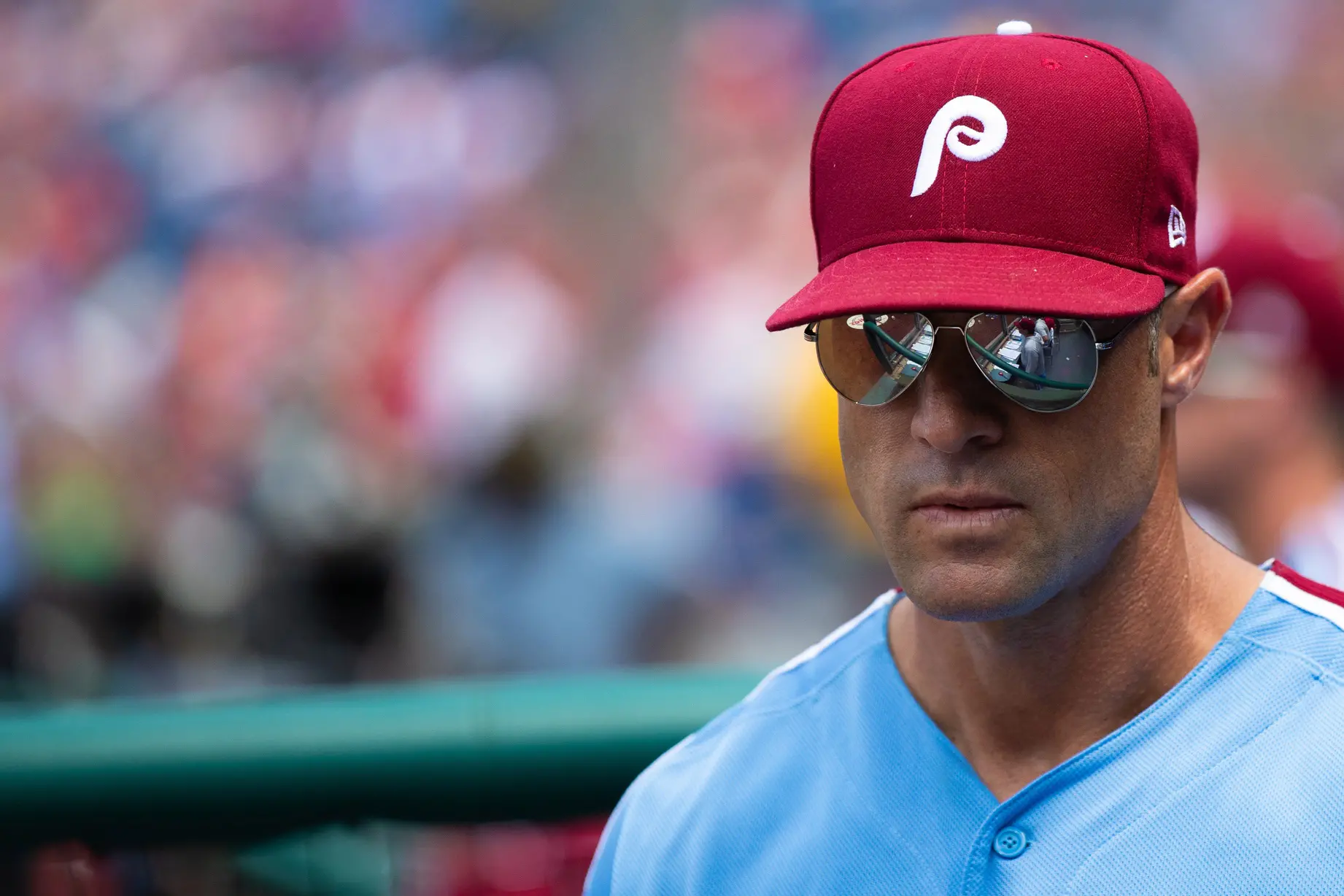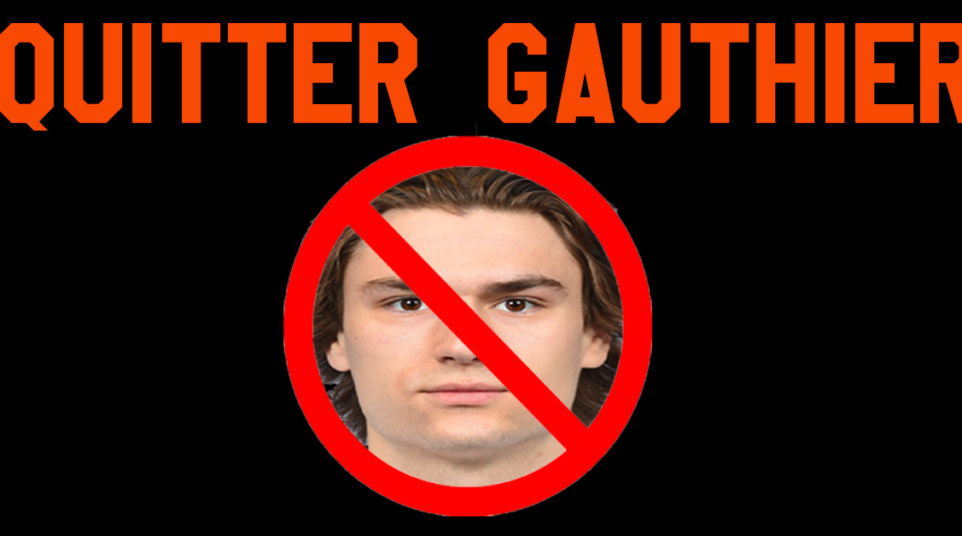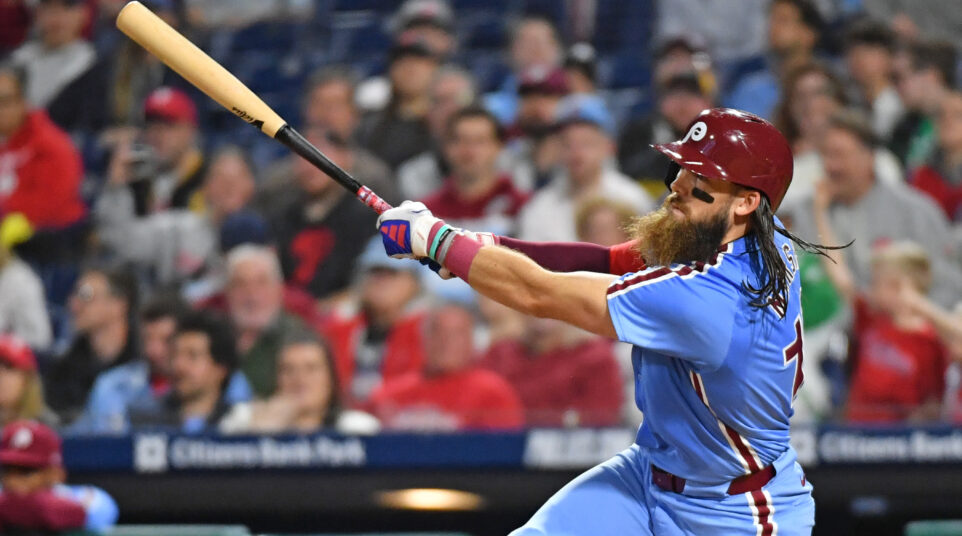
Actually, Gabe Kapler Isn't Just Throwing Darts
I’m interested in lineup construction. I want to know why a manager hits certain guys in certain spots and what exactly goes into the thought process as he mixes and matches a lineup to counteract an opposing team’s arms.
Most of the time, a manager’s lineup decisions are self-evident, while sometimes the tinkering might be a slight deviation from conventional wisdom. Occasionally, those deviations are more extreme. When this happens, such decisions typically elicit a skeptical “what the hell is this?” from observers.
As the Phillies continue their ongoing efforts to spark an inconsistent lineup that has underperformed for much of the season, that question has been asked more frequently of manager Gabe Kapler’s lineups.
Kapler certainly raised some eyebrows earlier this week when he put the struggling Rhys Hoskins, a hitter who has spent the bulk of his career in the middle of the order, atop his lineup prior to Wednesday night’s game.
Rhys Hoskins is batting leadoff? Why the hell is Rhys Hoskins batting leadoff?
If you think I’m making up a false reaction for the sake of providing a framework for this piece, well, I’m not.
Do a Twitter search for the terms “Kapler” and “lineup” together and see what comes up. There’s a critic or two – or 500.
“Does Gabe Kapler just throw darts at a board to pick his lineup?”
As it turns out, he doesn’t.
Hoskins, who entered Wednesday night’s game in the midst of a hideous 2 for 32 stretch over a nine-game span in which he failed to knock in a run, singled in his first at-bat and later recorded his first RBI since August 3 with a sacrifice fly.
He hasn’t exactly heated up since being put in the leadoff spot – going only 1 for 6 – but he has reached base three times in addition to that sacrifice fly in nine total plate appearances.
I asked Kapler prior to Thursday’s wild walk-off win that completed a rejuvenating three-game sweep of the Cubs about lineup construction, what factors go into the changes he makes, and about Hoskins’ move to the leadoff spot.
I found his answers to be insightful. I’ll interject with some thoughts along the way.
Crossing Broad: How do you weigh out your lineup? Say Rhys gets hot in the leadoff spot, right? Because he’s back in there tonight, and he’s starts to gain some traction, do you look at that and say, “Okay, now he’s getting going, so we’re going to leave him there?” Or do you say, “His natural positioning should be in the middle of the order, so now let’s transition him back.”
Kapler: It’s such a good question, and it’s something that we think about every day.
Thanks, Gabe. Continue.
Kapler: Every day is looked at as it’s own unique entity. Because you’re facing a different pitcher everyday. Players are dealing with different emotions and adjustments they need to make everyday, and you’re trying to account for what the opposing manager and club is going to do. So by way of example, you saw us have Harper at the top of the lineup on several occasions. We also at that point had Haseley down at the bottom of the lineup, or you’ve seen some other guys who haven’t performed historically as well against left (left-handed pitching) down at the bottom of the lineup. And what we saw is that opposing managers are going to try to take advantage of that, so they will have their best left-handed reliever available for the bottom of the lineup, take him all the way through the top and try to get Harper, too.
So, for example, this is just an exercise in lineup construction, game strategy, etc. If Harper is our leadoff hitter today, and Haseley is our eight-hole hitter, and our best options off the bench are left-handed, you can envision a scenario where they’re going to bring their best left-handed reliever in to force us to use maybe a lesser right-handed option, or if we use Logan Morrison by way of example, they’ve got left-left-left to go through with Harper at the top.
Right, so the first thing to consider is the matchup with the opposing starting pitcher. Taking a player’s psyche into consideration is part of the equation as well as how an opponent’s bullpen is best suited to attack the lineup in the later innings. Pretty standard stuff. Matchups and make sure the the player can mentally handle it.
Obviously, the Phillies don’t view Harper as a prototypical leadoff hitter given he hasn’t hit there most nights, but with the offense tanking, they thought his on-base skills could provide a spark. Of National League hitters with at least 300 plate appearances this season, Harper’s 15.6% walk-rate is third. He’s also been productive in eight games out of the leadoff spot with a .972 OPS, but that positioning became problematic when opponents countered in late innings against their left-handed heavy offense. More Gabe:
Kapler: So we’re constantly thinking about best lineup construction, staggering left and right against a right-handed pitcher, the mental well-being of the player in question – in this case Rhys – and try to balance all of those things. I don’t think it’s any magic formula.
I think it’s considering all of those angles on a daily basis and then getting ready to explain it to people so it makes sense. Because if you don’t have these kinds of conversations, it just looks like you’re kind of randomly selecting people to put into spaces. When in reality, from the time the game ends, you’re planning that out until we get to this moment today and literally having conversations about it throughout the night.
Kapler and the Phillies organization are often criticized for ignoring the human element of baseball. You hear things all of the time like how Kapler needs to “go with his gut” in the dugout or how he needs to “get off his computer,” but such comments are a bit of an oversimplification.
Do we know what “going with his gut” means, or what his “computer” says? Often, something like this gets said when a decision backfires, not because it was gut versus analytics.
In fact, the term “analytics” gets grossly overused in this city because we often don’t know what specific data is part of the equation for certain decisions, nor do we know how each of the equations variables are weighted. Instead, it simply serves as an umbrella term to lazily explain away what we may not be able to explain at a basic level.
Phillies. Numbers. Analytics. Bad. The end.
Interestingly, one of the most common critiques of Kapler as a manager is the supposed lack of continuity in his lineups, but the facts show that when compared to how other teams juggle their lineups, Kapler has done it way less than his contemporaries this season.
After using a staggering 138 different batting order combinations a season ago, the Phillies have used only 74 different lineups this season. Only the Braves (64) have used less combinations among NL teams. In fact, five of the NL’s top six offenses have used more combinations this season. Have a look:
- Dodgers 101
- Braves 64
- Rockies 102
- Diamondbacks 92
- Nationals 85
- Cubs 109
For further context, the 2010 Phillies used 94 different batting order combinations, and the 2011 Phillies used 105, so while Kapler isn’t exactly plugging in the same eight guys in the same eight spots every day (and why would he with an offense that is in the bottom-third of the league in several statistical categories?), his lineup iterations are comparatively conservative this season, and they also aren’t an outlier to Manuel’s teams.
As for Hoskins, Kapler feels accentuating his best qualities as a hitter might get him to relax a little bit.
“Why is Rhys Hoskins who he is as a hitter? What is his best skill? Getting on base. Two things: hit home runs and get on base,” he said. “But the get on base thing is the most important thing. More than steal a base, be on base. Because you can’t steal first base. You gotta get there.”
It’s obvious the Phillies and Kapler don’t view Hoskins as a long-term solution in the leadoff spot. In fact, it wouldn’t surprise me if he’s out of there at some point this weekend against the Padres. Then again, the Phillies have scored 18 runs in two games with Hoskins leading off. If it’s not broke, don’t fix it. Right?
Not exactly.
Kapler: It’s so important because sometimes I’ll find, I’ll take you back like several weeks. There was one point and we won a game, and I had heard through the grapevine that there was a conversation coming into the dugout. There was a different lineup up, and the narrative was like you don’t change the lineup after a win, that was something I heard from one specific guy, and I realized that’s really how a lot of people feel, right?
In those situations it’s really important to draw attention to the best teams in baseball over the last 20 years and how they actually do change lineups based on the opposing starting pitcher or trying to get a guy going at the top of the lineup.
Right or wrong, I don’t know. What I do know is that while you may not like Kapler’s methodology or thought process as he constructs his lineups on a daily basis, he’s not just throwing darts.





